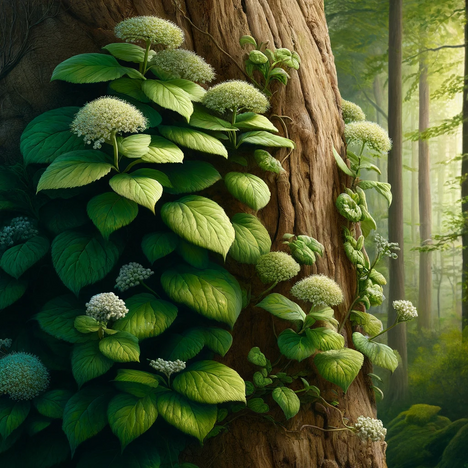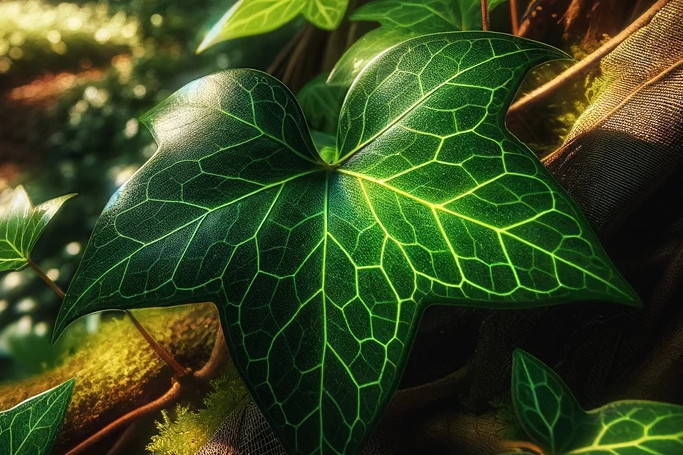Climbing hydrangea

What is climbing hydrangea?
The climbing hydrangea(Hydrangea anomala subsp. petiolaris) is a deciduous climbing plant known for its ability to climb surfaces with adhesive roots and grow up to 15 meters high. In early summer, it adorns itself with white, fragrant flowers arranged in large, umbrella-shaped panicles. Originally from the forests of Asia, it is popular worldwide as an ornamental plant in temperate climates.
The attraction of the climbing hydrangea to dogs
Dogs are often attracted to the sturdy stems and dense foliage of the climbing hydrangea, which provide them with shade and an interesting space to explore. However, the plant itself has no known nutritional or health benefits for dogs and should be considered a potential risk rather than a benefit.
Potential hazards of climbing hydrangea for dogs
Toxicity
Climbing hydrangea contains cyanide-containing compounds, particularly in its leaves and flowers. While occasional contact is harmless to dogs, ingestion of the plant parts can cause toxic reactions. Symptoms of poisoning can include vomiting, diarrhea, lethargy and, in severe cases, even respiratory distress.
Mechanical injuries
The sturdy stems and adhesive roots of the climbing hydrangea can also cause mechanical injuries, especially when dogs try to navigate through dense undergrowth or climb the plant.
Allergic reactions
Some dogs can be sensitive to contact with certain plants, and the climbing hydrangea is no exception. Skin irritation and allergic reactions can occur, although this is relatively rare.
Recommendations for dog owners
Given the potential risks, dog owners should take precautions to protect their dogs from climbing hydrangea:
- Restrict access: make sure your dogs do not have access to areas where climbing hydrangea grows, especially if they are prone to chewing or exploring plants.
- Observation: Watch for signs of toxicity or allergic reaction, especially after visiting gardens or parks where climbing hydrangeas are found.
Enjoy beauty with caution
The climbing hydrangea is undoubtedly an asset to any garden, but dog owners need to exercise caution. The potential toxicity and risk of mechanical injury make it a plant better admired from a distance, at least from our dogs' perspective. By making our garden dog-friendly and avoiding or making inaccessible potentially dangerous plants, we can help keep our four-legged friends safe and healthy while enjoying the natural beauty around us.
If you notice any signs of hypersensitivity or poisoning in your dog, you should see your vet immediately. We are not a substitute for a vet, but we try to be as accurate as possible. Every dog reacts differently and we recommend you get a second opinion or consult your vet if in doubt.
Stay healthy and take good care of your four-legged friend!😊
Similar to Climbing hydrangea
Unfortunately, ivy is poisonous to dogs. Both the leaves and the berries contain saponins, which can lead to symptoms of poisoning. These are vomitingdiarrheasalivationtremblingshortness of...
The three-spired maiden vine is a climbing plant that is known for its ability to grow up walls and facades with the help of its adhesive roots. It belongs to the vine family and is particularly...
Clematis is a genus of around 300 species of perennial plants from the buttercup family. They originally come from the temperate zones of the northern hemisphere, but are now found all over the...
Garden honeysuckle (Lonicera caprifolium) belongs to the honeysuckle family (Caprifoliaceae) and is native to southern Europe and North Africa. It is a woody perennial plant that can climb up to 10...



